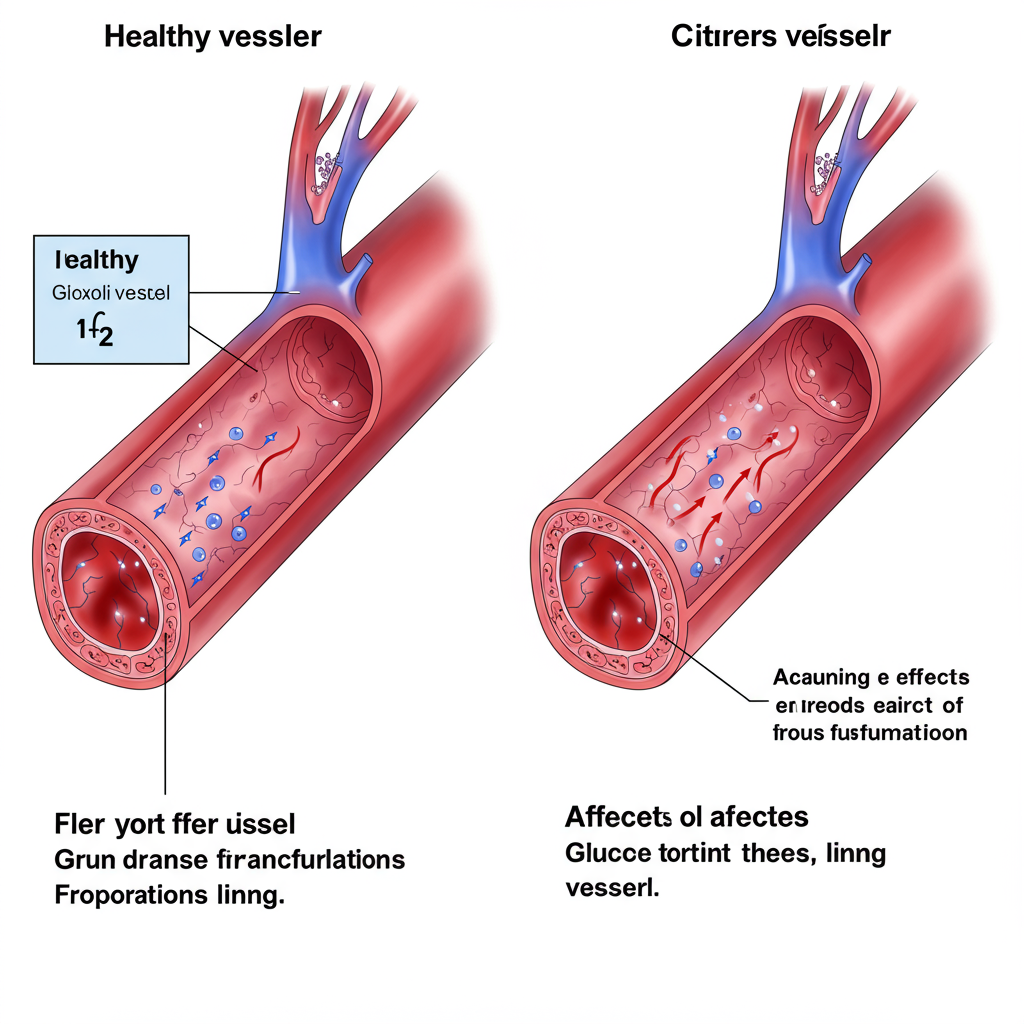The Hidden Danger: How Blood Sugar Spikes Damage Your Blood Vessels (Even When You're Not Diabetic)
Blood sugar spikes aren't just a concern for those with diabetes—they pose a significant threat to everyone's vascular health. Each time your glucose levels surge after a meal, a cascade of harmful processes begins in your blood vessels, potentially leading to long-term damage even in metabolically "healthy" individuals. Let's explore this often-overlooked aspect of metabolic health that affects us all.
The Glycemic Rollercoaster We All Experience
When you consume carbohydrate-rich foods—whether a bowl of pasta, a sugary dessert, or even a large serving of fruit—your blood glucose levels rise. In response, your pancreas secretes insulin to help cells absorb this glucose. For non-diabetics, this regulatory system generally works efficiently, returning blood sugar to baseline within a couple of hours.
However, the magnitude and frequency of these spikes matter significantly. The standard American diet, characterized by processed carbohydrates and frequent eating patterns, creates repeated glucose excursions throughout the day. While these fluctuations may not register as clinical hyperglycemia, mounting evidence suggests they still cause cumulative damage to our vascular system.

As I often discuss in my practice, what matters isn't just your fasting glucose or A1C levels, but also the amplitude and frequency of your glucose excursions. Every spike above your personal threshold represents a potential micro-injury to your blood vessels.
The Vascular Damage Mechanism
What exactly happens to blood vessels during these seemingly normal glucose fluctuations? The process is both fascinating and concerning:
-
Endothelial Dysfunction: The endothelium—the delicate inner lining of blood vessels—is particularly sensitive to glucose fluctuations. Even transient hyperglycemia reduces nitric oxide production, impairing vasodilation and creating a pro-inflammatory state.
-
Oxidative Stress: Glucose spikes trigger the production of reactive oxygen species (ROS), which damage cellular components and accelerate vascular aging. This oxidative stress occurs even in non-diabetics when glucose rises significantly after meals.
-
Advanced Glycation End Products (AGEs): When glucose molecules attach to proteins in your blood vessel walls without enzymatic control, they form AGEs. These compounds progressively stiffen arteries and contribute to atherosclerosis, occurring incrementally with each significant glucose excursion.
-
Microinflammation: Post-meal glucose spikes trigger the release of inflammatory cytokines and increase adhesion molecule expression, promoting a chronic low-grade inflammatory environment in blood vessels.

The crucial insight here is that these processes don't require diabetes or prediabetes to occur—they happen to varying degrees in everyone experiencing significant glucose fluctuations, regardless of their baseline metabolic health.
Protecting Your Vessels: Practical Strategies
The good news is that we can implement effective strategies to minimize these harmful glucose excursions:
Structure Your Meals Strategically
- Begin meals with fiber, protein, and healthy fats before consuming carbohydrates
- Consider vinegar (1-2 tablespoons) before carbohydrate-rich meals to blunt glucose response
- Incorporate appropriate physical activity after meals—even a 10-minute walk can significantly reduce post-meal glucose spikes

Choose Carbohydrates Wisely
- Prioritize lower glycemic index foods and complex carbohydrates with intact fiber
- Reduce ultra-processed carbohydrates and added sugars
- Consider your personal glucose response, which may differ from standardized glycemic index charts
Timing Matters
- Space meals appropriately to allow glucose levels to fully normalize between eating
- Consider time-restricted eating to extend your daily period of stable glucose
- Front-load carbohydrate consumption earlier in the day when insulin sensitivity tends to be higher
Leverage Technology
- Continuous glucose monitors (CGMs) aren't just for diabetics—they provide invaluable feedback about how your individual body responds to different foods and meal patterns
- Use this data to personalize your approach rather than following generic dietary guidelines
Remember, the goal isn't glucose perfectionism, but rather minimizing unnecessary spikes while maintaining a sustainable, enjoyable approach to eating. Each improvement in your glucose pattern represents meaningful protection for your vascular health.
Conclusion: A Broader Perspective on Metabolic Health
Understanding how blood sugar fluctuations affect vascular health even in non-diabetics represents a paradigm shift in preventive medicine. Rather than waiting for diagnostic thresholds of diabetes or prediabetes to be crossed, we should view glucose regulation as a continuum where optimization benefits everyone.
The damage from glucose excursions accumulates subtly over decades before manifesting as clinical cardiovascular disease. By implementing strategies to smooth these fluctuations now, you're making an investment in your long-term vascular health that may yield significant returns in longevity and quality of life.
The evidence increasingly suggests that optimal metabolic health isn't just about avoiding disease—it's about optimizing the function of every blood vessel in your body, with each meal representing either an opportunity or a challenge for your vascular system.
References:
Ceriello, A., Esposito, K., Piconi, L., Ihnat, M. A., Thorpe, J. E., Testa, R., ... & Giugliano, D. (2008). Oscillating glucose is more deleterious to endothelial function and oxidative stress than mean glucose in normal and type 2 diabetic patients. Diabetes, 57(5), 1349-1354.
O'Keefe, J. H., Bell, D. S. (2007). Postprandial hyperglycemia/hyperlipidemia (postprandial dysmetabolism) is a cardiovascular risk factor. The American Journal of Cardiology, 100(5), 899-904.






